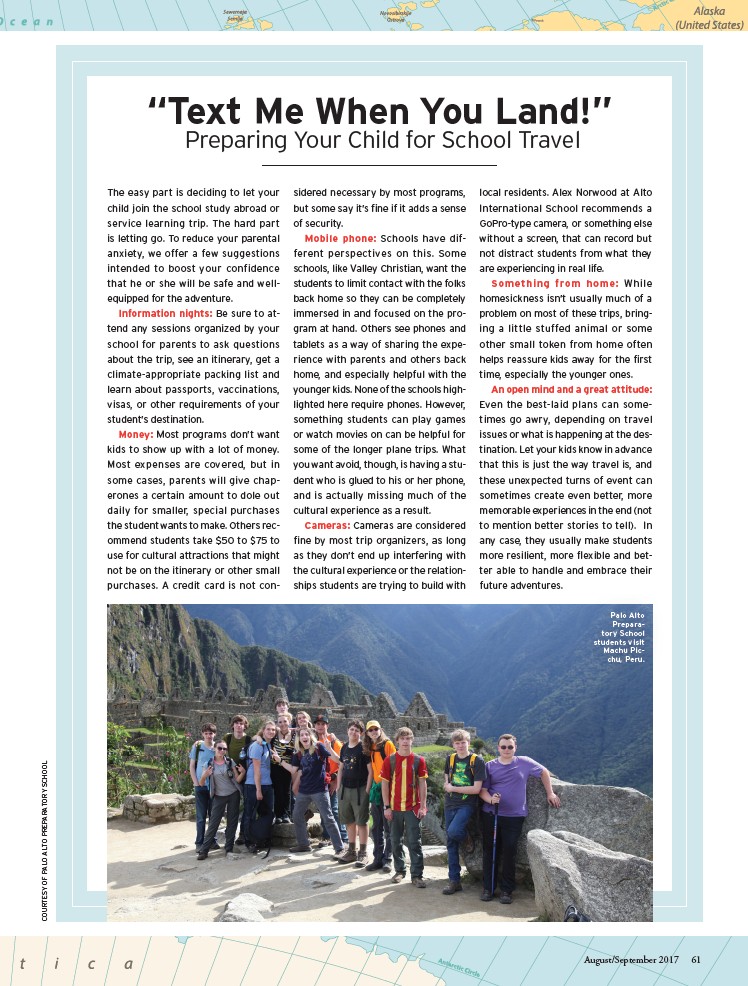
“Text Me When You Land!”
Preparing Your Child for School Travel
The easy part is deciding to let your
child join the school study abroad or
service learning trip. The hard part
is letting go. To reduce your parental
anxiety, we offer a few suggestions
intended to boost your confidence
that he or she will be safe and wellequipped
for the adventure.
Information nights: Be sure to attend
any sessions organized by your
school for parents to ask questions
about the trip, see an itinerary, get a
climate-appropriate packing list and
learn about passports, vaccinations,
visas, or other requirements of your
student’s destination.
Money: Most programs don’t want
kids to show up with a lot of money.
Most expenses are covered, but in
some cases, parents will give chaperones
a certain amount to dole out
daily for smaller, special purchases
the student wants to make. Others recommend
students take $50 to $75 to
use for cultural attractions that might
not be on the itinerary or other small
purchases. A credit card is not con-
sidered necessary by most programs,
but some say it’s fine if it adds a sense
of security.
Mobile phone: Schools have different
perspectives on this. Some
schools, like Valley Christian, want the
students to limit contact with the folks
back home so they can be completely
immersed in and focused on the program
at hand. Others see phones and
tablets as a way of sharing the experience
with parents and others back
home, and especially helpful with the
younger kids. None of the schools highlighted
here require phones. However,
something students can play games
or watch movies on can be helpful for
some of the longer plane trips. What
you want avoid, though, is having a student
who is glued to his or her phone,
and is actually missing much of the
cultural experience as a result.
Cameras: Cameras are considered
fine by most trip organizers, as long
as they don’t end up interfering with
the cultural experience or the relationships
students are trying to build with
local residents. Alex Norwood at Alto
International School recommends a
GoPro-type camera, or something else
without a screen, that can record but
not distract students from what they
are experiencing in real life.
Something from home: While
homesickness isn’t usually much of a
problem on most of these trips, bringing
a little stuffed animal or some
other small token from home often
helps reassure kids away for the first
time, especially the younger ones.
An open mind and a great attitude:
Even the best-laid plans can sometimes
go awry, depending on travel
issues or what is happening at the destination.
Let your kids know in advance
that this is just the way travel is, and
these unexpected turns of event can
sometimes create even better, more
memorable experiences in the end (not
to mention better stories to tell). In
any case, they usually make students
more resilient, more flexible and better
able to handle and embrace their
future adventures.
COURTESY OF PALO ALTO PREPARATORY SCHOOL
Palo Alto
Preparatory
School
students visit
Machu Picchu,
Peru.
August/September 2017 61